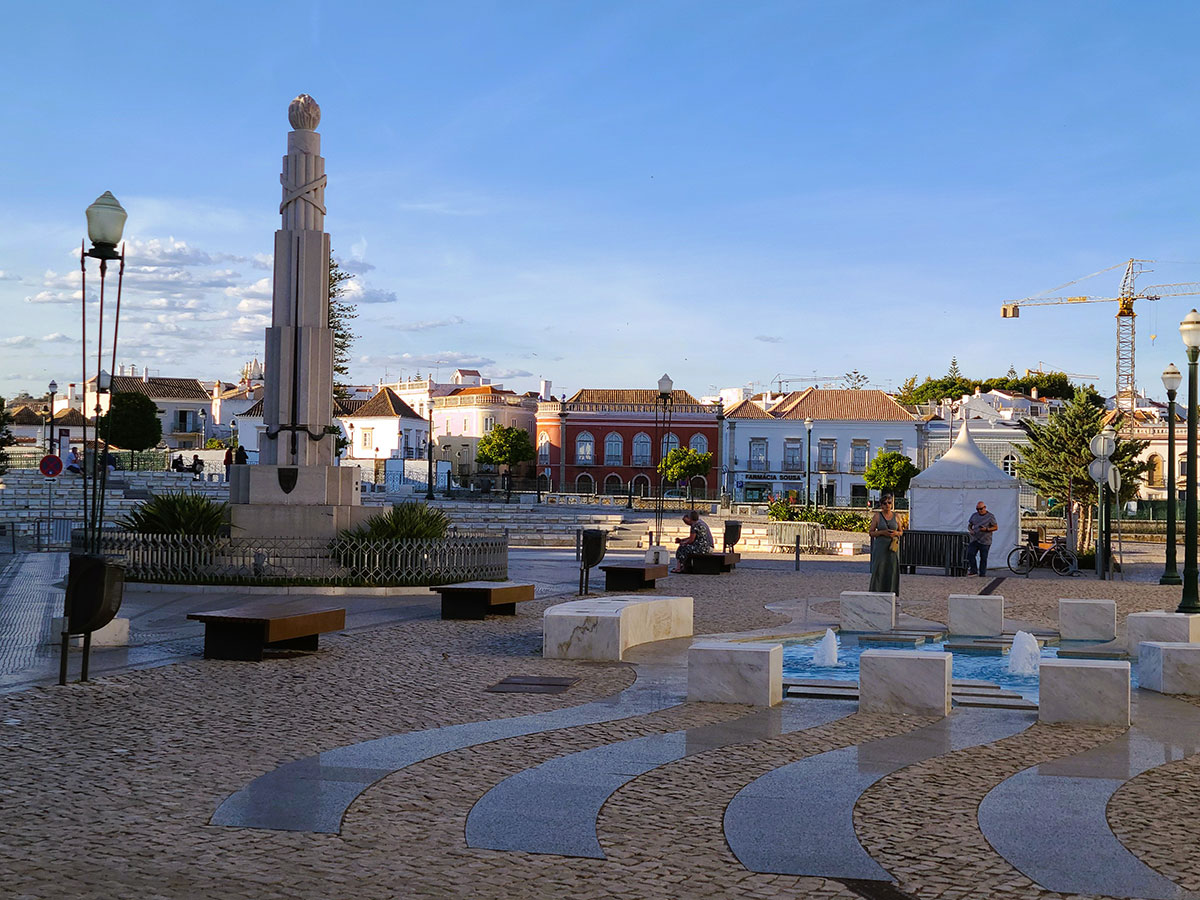The Algarve – Tavira – Portugal
Many years ago, Albufeira, on the Algarve coast, had become a trendy destination that retained all the charm of a traditional Portuguese fishing village. Today, it’s overrun by a tsunami of tourists and foreigners, who make it their permanent or second home for the summer season.
On this occasion, we began our visit to the Algarve with a day in Lagos. On a Monday morning in spring, the bumper-to-bumper traffic and sidewalks clogged with suntanned pedestrians announced that Lagos is now a popular destination, where multi-story, dazzling white apartment buildings stand shoulder to shoulder. Nevertheless, its natural beauty remains breathtaking.
Turquoise waters sparkle in coves sheltered by nature’s sculpted rock formations, waves break gently onto the golden sand beaches, and purple and yellow spring flowers provide a burst of color between the rocks.


We came across MAR- a Restaurant and Bar perched on a hilltop presiding over a panoramic coastline view. MAR is more than just a seafood restaurant; it’s a memorable experience. We ordered a grilled tuna steak and a curried prawn salad. Both dishes were beautifully presented, cooked to perfection, and accompanied by glasses of chilled white wine.

While Tavira has been discovered and become popular primarily with the British and French, who purchase homes as their summertime retreats, it still has the ambiance of a Portuguese village.
Our comfortable, spacious Air B&B was located on a cobblestone street within two blocks of Rio Gilão and the quay, where boats go back and forth to the beaches at Ilha da Tavira and Ilha da Cabanas.

These two islands form eleven miles of golden sand beaches where the ocean is calm and crystal clear. Ilha Tavira ferries leave the town quay every hour, traveling down the Ria Formosa lagoon where the tides flow in and out, revealing plant life, sand dunes, salt marshes, and sea grass that attract a variety of birds and marine life. These Salinas (salt marshes) are considered worldwide to be an outdoor chemistry laboratory rich in minerals.


We would make breakfast sandwiches and catch the early boat to the beaches. In the deserted blissful quiet of the morning, we’d buy coffee from a café and settle down on comfy padded chairs under a sombrinha de praia (umbrella) for a beach breakfast.


At lunchtime, we’d choose from a wide variety of beachside restaurants and indulge in platters of freshly grilled fish accompanied by the typical Portuguese hors d’oeuvres: crusty bread served with small cubes of cheese marinated in herbs, olive oil, and vinegar, accompanied by velvety sardine and tuna patés.

Evenings in the village are glorious. The gentle sunshine caresses Praca da Republica, a triangular plaza where City Hall, cafés, ice cream parlors, and restaurants beckon one to linger and relish the unique charm of Tavira in the waning light.


Ponte Romana – the Roman bridge, links the two sides of the village. One side is lined by elegant palazzos and the other by a park where walkways bordered by trees are punctuated with bright red benches and climbing burgundy bougainvillea.



Dinner time offers an abundance of restaurants to choose from. The palazzo side is a maze of cobbled lanes, chock full of atmospheric charm. It’s like stepping into a beautiful advertisement for Portugal. Buildings are draped with curtains of flowering vines and bougainvillea, and restaurants set up their dinner tables outdoors, leaving a narrow opening for pedestrians. It’s a magical outdoor dining treat.
On Rua Travessa and Rua Jacques: Tonel, Aquasul, and O Patio, are just a tiny handful of restaurants that serve delicious fish and seafood dishes.



We wandered the narrow web of streets on both sides of the river, where traditional Portuguese architecture has been restored and preserved. Every Praϛa (Plaza) is home to architectural gems.
Plump, juicy oranges dangle from trees set against a backdrop of buildings covered in blue azulejos ceramic tiles; balconies are embellished with intricate, patterned designs; windows and doorways are encased in decorative molding; bold, bright shades of red, yellow, and blue, enhance the beauty of the facades.




While several bridges straddle the river, the most famous is the seven-arched Roman Bridge, which archaeologists have now identified as a Moorish bridge that originated as early as the 12th century.
Roman or Moorish it’s a charming and beloved landmark to Tavira residents.

